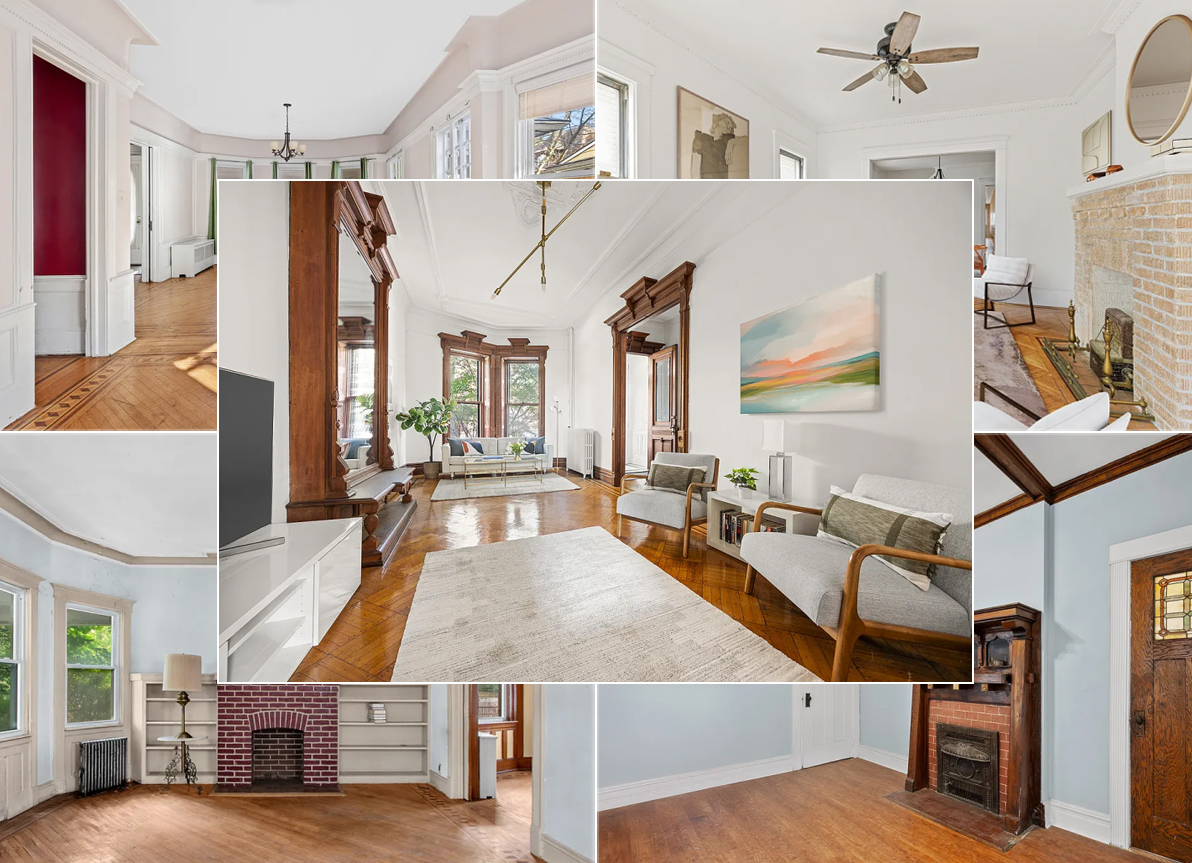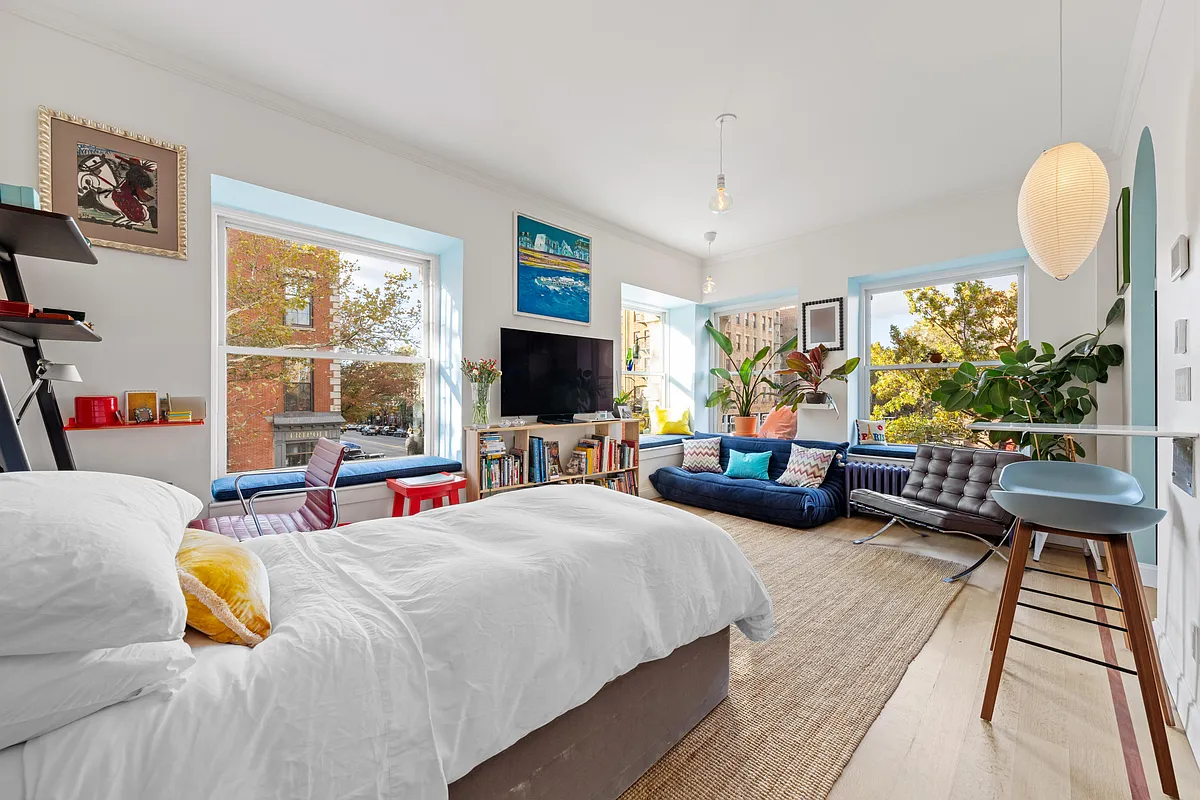News Flash: Everyone Wants to Live in the City
If you weren’t already convinced that city life is becoming increasingly preferable to suburban life, see this article in The New Republic, which looks at a trend called “demographic inversion”—a reversal of the white flight that helped hollow out the inner city beginning in the 1950s. The author quantifies what many Brooklynites already know: the…


If you weren’t already convinced that city life is becoming increasingly preferable to suburban life, see this article in The New Republic, which looks at a trend called “demographic inversion”—a reversal of the white flight that helped hollow out the inner city beginning in the 1950s. The author quantifies what many Brooklynites already know: the neighborhoods closest to vocational and cultural hubs (like, dare we say, Manhattan) and with shopping and services in walking distance are the most popular, forcing poorer folks to move further and further out. There’s been plenty of talk about the suburbs potentially turning into 21st century slums but what will 21st century cities look like if demographic inversion continues? “In the worst case, demographic inversion would result in the poor living out of sight and largely forgotten in some new kind of high-rise projects beyond the city border, with the wealthy huddled in gated enclaves in the center.”
Trading Places [The New Republic]
Beyond Gentrification [Curbed]
Photo by Daily Phototherapy.





Wow–I just read that New Republic article. That is like the What’s worst nightmare. Imagine middle class people living happily in city centers. The What must shudder and moan at such thoughts.
Finance Guy;
I don’t disagree that the suburbs have been subsidized by tax breaks, and the results speak for themselves: tracts of homes slapped up and sprawled out everywhere, ruining the countryside. How does that justify rent control in the city? If anything,it speaks to the opposite. It speaks to what happens when the government gets involved in an area where it has no business: the housing market. It just creates distortions that have unintended consequences. No other major city in the US has rent control, and they get along just fine. It’s time to take this beast behind the barn and shoot it. End all subsidies for housing, be it in the form of rent control or mortgage interest deduction.
Lest you think I am just advocating the imposition of a free-for-all society: I believe some people do need help,in the form of Earned Income Tax Credit, unemployment benefits, retraining programs for those who have been affected by gloablization, etc. These programs help actual individuals. The tax breaks and subsidies to housing, regardless of the actual person’s situation, only creates inefficiences and distortions, never mind the trampling on liberty and private property rights.
financeguy:
You are wrong about expanding rent stabilization to new buildings. While the article in question does refer only specifically to eliminating decontrol, there are more than a few politicians who do advocate expanding rent stabilization to all apartment buildings.
While I hate slippery slope arguments, if this were to occur – I guarantee it would not be such a large step to expand the system. We are already entering a period that is very much going to look like New York City in the early 1970s: high inflation and rising fuel costs. If people believe rent stabilization was passed for the right reasons at that point in time, those reasons will be perfectly applicable to this city in the next year or two.
I do agree however that suburban living is subsidized in many ways. High taxes on fuel and elimination of the subsidies you mention would do wonders to change things. That is extremely difficult however.
Polemicist -no offense but at the prices the “rich” (i.e. Private equity and hedge funds) are paying today for both commercial and residential real estate – it is FAR from a risk free investment (virtually all the big $ buyers of RS housing are getting KILLED and will even more if oil doesn’t drop by the winter – see Stuy Town and Maclowe for high profile examples)
As for LL receiving subsidies- BxGirl – please tell me how LL of RS housing are getting any subsidies from the Government???
1842 – I agree with allot of what you are saying but….if the price for a suburban home (including things such as good schooling etc…) falls enough compared to the city – then people will move. As families grow they tend to move – if a suburban home (plus car, plus maintainance, pluse taxes etc…) cost thousand less a month than a liveable city dwelling (plus poss. private school, plus inc taxes, etc….) how many people are SO committed to urban living that they will stay. (i.e. Gas would have to increase ALLOT more to make a nice $600,000 suburban house as expensive as a nice family size apartment in a decent area of the city – generally $1.2M or higher)
Also while white flight was most prevalent in the 60’s – it was the effect of this massive social dislocation that resulted in the crime, abandonment etc… of the 70’s (not bad police work or redlining)- which given the lack of room – really can’t happen again (at least not at that scale) – no matter what THE WHAT says.
The What said: “When the shit hits the fan everyone and their mother is going to leave the city.”
Where are we going to go? My job is here. My wife’s job is here. Our entire life revolves around this city. So where are we going to go? Unless you think that suburbanization will make a full throated comeback in this era of exploding gasoline prices and new environmental awareness (unlikely) we are most likely going to stay here despite an economic downturn.
Polemicist: I agree that there has never been a successful government intervention in the manner that I was advocating. But one can’t stop hoping for better, more humane governance.
Benson:
Everyone keeps mentioning Avalon, but I want to reiterate it has a 421(a) abatement and participates in the 80/20 program.
Bxgrl:
We need laws that proscribe a minimum allowable density near public transportation as long as a housing shortage exists. With current construction costs, 10 to 12-story buildings are the most cost effective. They should be allowed within a reasonable distance from subway stations throughout the city.
We also need the state to phase out rent stabilization completely.
I also actually believe the incentives have to stop. You have to understand that the truly rich like the way this system works today. The system keeps vacancy rates low, which makes their buildings virtually risk free investments. You dish out some government subsidies, paid for by the tax payers, and they get a great return way beyond other safe investments like treasury notes.
As 11217 mentions – the city population exploded in the 1920s and 1930s. There was no rent control, no bond financing, no tax abatements – but you know what? over 500,000 housing units were brought online – and most were great quality. The Bronx was built as middle class housing. By 1940, more residents there had central heat and hot water, electricity, and full bathrooms than any other county in the country.
fsrq- I’m not sure what it looks like either any more. But finance guy puts it better and more knowlegeably than I could “but suburban living and home ownership continue to be heavily subsidized through the mortgage interest deduction, cheap oil, highway subsidies, wars in the Middle East, free pollution rights, school finance rules that allow self-segregation to avoid paying for more expensive education, and so on”
So in actuality, we’ve helped susidize the suburban lifestyle, and sometimes at the expense of our cities, LL’s and others are benefiting, so worrying about rent control and rent stabilization starts to feel like a red herring. To me anyway- but my experience is first hand, as a tenant and a taxpayer. I’ve never been on welfare, never had food stamps, my life is- shall we say- closer to the bone than most posters here would be comfortable with
Not recognizing that fact that LL’s and property owners benefit from subsidies creates a one-sided argument that doesn’t help find a fair solution.
FinanceGuy – arent you ignoring the effect of 1M or so units that when vacant still must legally offer a rent below market? And arent you also ignoring the effect that those ‘potential’ windfall profits have on spurring new construction and development (look at what is going on in terms of the sudden push to have alternative energy as well as additional new drilling for oil).
I don;t disagree that some of these competing factors have to be balanced but certainly vacancy decontrol at a minimum could allow market forces to spur more production, while offering some protection for the ‘average joe’ from the natural whipsaw effect of a totally free market.